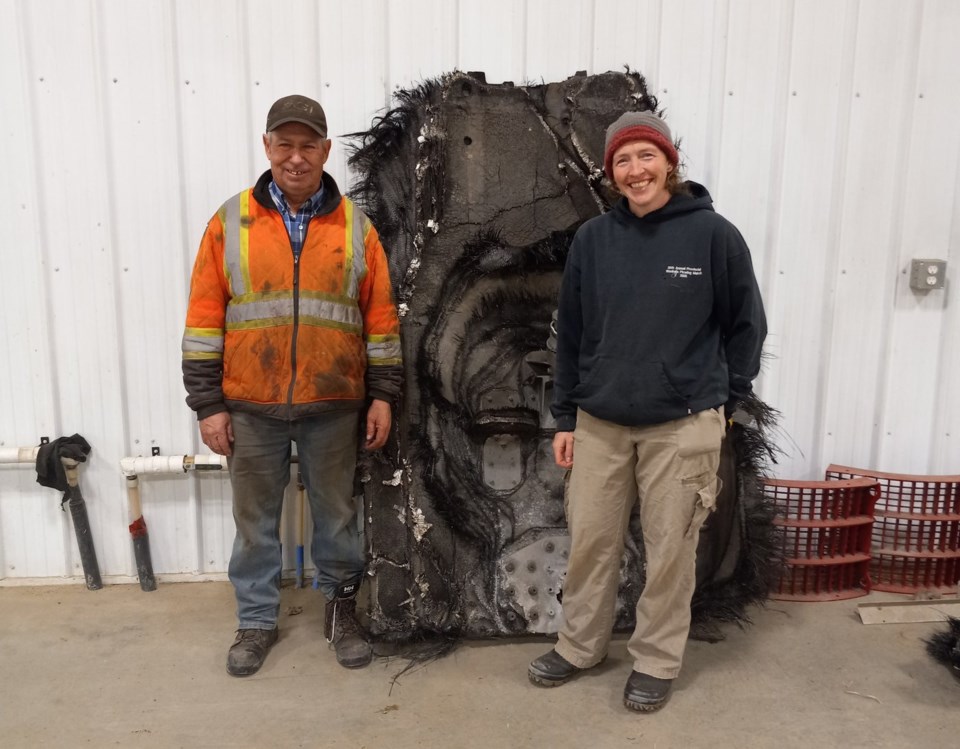Barry Sawchuk is not alone in the space junk universe.
The Saskatchewan farmer who made headlines earlier this month when he reported a giant piece of space debris had slammed into his field now says his neighbours are also reporting close encounters with orbital debris.
"There's other pieces here,” said Sawchuk, who farms near Ituna, northeast of Regina.
“There are neighbours that have them, too. There's seven pieces that I know of right now, and there could be more any day.
"Everybody's going across their fields for the first time ... we're seeding. There's big pieces. I don't know if it's harvesting space junk, but we found it.”
He declined to identify the neighbours, saying the wreckage is their story to tell. But he said he's seen pictures of their debris, including one shard that appears to be well over two metres high.
Sawchuk said he has been contacted by spacecraft builder SpaceX and is attempting to negotiate a price to send back the junk. He said he gave the company's contact information to his neighbours, too.
"They (SpaceX) want it — and they should want it — back,” Sawchuk said.
He said SpaceX needs to explain why the junk didn't burn up in the atmosphere like it's supposed to and instead plowed intact to the ground.
It’s concerning one piece landed less than a half kilometre from one of the houses on his farm, Sawchuk said.
"What happens if it hit a city? As near as I can tell, it would have been going 160 to 200 kilometres an hour when it landed.”
SpaceX has not publicly confirmed it owns the debris. The Canadian Press twice reached out for comment to the manufacturer, which is owned by entrepreneur Elon Musk, but received no reply.
Sawchuk, 66, farms with his three sons. He said he was checking the moisture in his fields at the end of April when he spotted the debris — a scorched piece of carbon fibre honeycombed with aluminum attached to what appeared to be a hydraulic cylinder.
Sawchuk said the fragment weighs 44 kilograms and is taller than he is. A second, smaller one – about 10 kilograms – was also found on the farm.
Samantha Lawler, an associate professor of astronomy at the University of Regina, said she isn't surprised more debris is turning up.
"The pieces that Barry Sawchuk found are enormous, so of course there's going to be many, many smaller pieces that are around," Lawler said.
"I know from meteorite re-entries, they could be spread out over quite a wide area."
Lawler sent photos and information about Sawchuk’s space fragment to colleague Jonathan McDowell, an astrophysicist at Harvard who tracks space launches.
Looking at data, McDowell determined Sawchuk’s find was likely linked to a SpaceX Dragon spacecraft that returned to Earth in February with four passengers from the International Space Station.
Lawler said the wreckage is a black eye for SpaceX, as debris has been found in other locations in the United States and Australia.
"I would hope SpaceX would want the pieces back, so they could learn and do some better engineering so giant pieces of their spacecraft are not falling on people on the ground,” she said.
This report by The Canadian Press was first published May 30, 2024.
Bill Graveland, The Canadian Press




